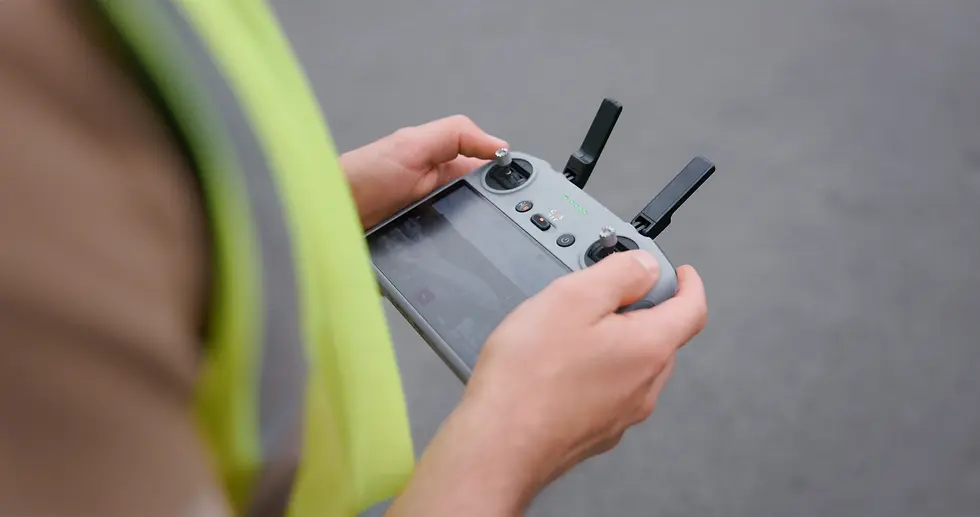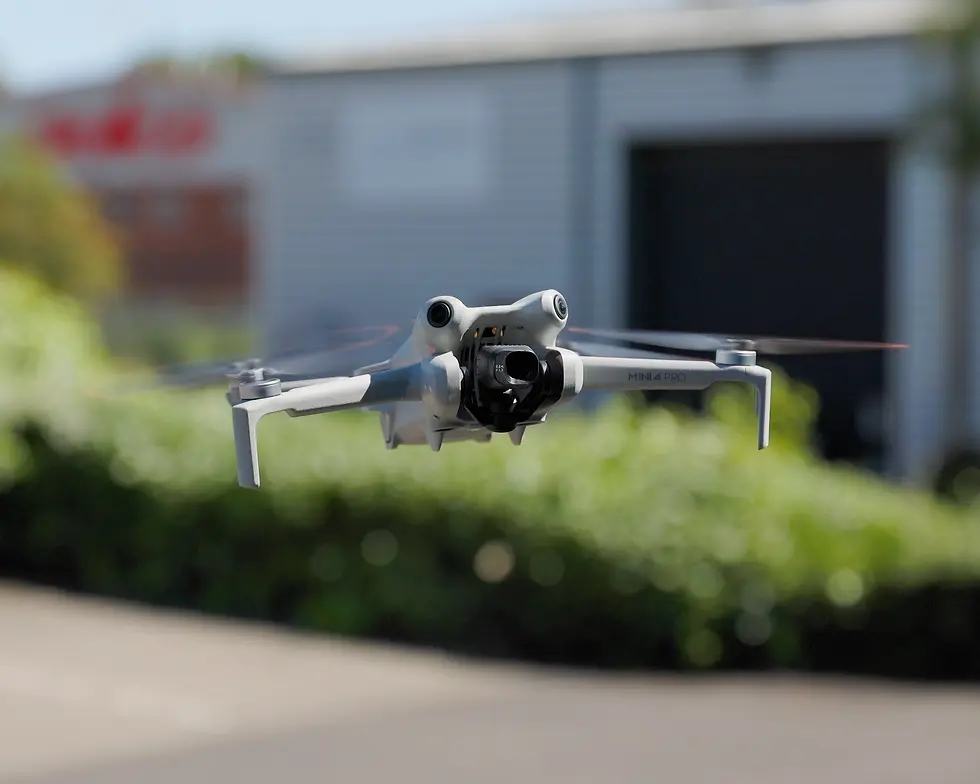Upcoming UK Drone Regulation Changes (July 2025–Mid-2026)
- Instinctive Media

- Jun 30
- 4 min read
Updated: Aug 29
As a professional or hobbyist drone pilot in the UK, staying ahead of UK drone regulation changes is essential. From July 2025 onwards, the Civil Aviation Authority (CAA) and Department for Transport (DfT) will introduce several key updates affecting how you register, train, equip and operate your unmanned aircraft. This article breaks down what’s coming, when it comes into force, and how to prepare.

Overview of Changes - UK drone regulations
Between early 2026 and mid-2026, operators can expect:
A Statutory Instrument (SI) to enact CAP 3105 recommendations, timetable to be confirmed by DfT
Revised Open-Category sub-categories (A1/A2/A3) and a new 100 g weight threshold for Flyer ID and registration.
Mandatory UK class-marking (UK0–UK6) and enhanced product-safety requirements for new drones from 1 January 2026.
Phased rollout of Direct Remote ID broadcasting (from 1 January 2026) and geo-awareness (soft geo-fencing) features.
Updated night-flight lighting rules and refined Specific-Category authorisation processes.
Key Dates & Milestones
Autumn 2025
Statutory Instrument (SI) laid before Parliament to enact CAP 3105 recommendations.
Early 2026 (approx. Q1)
SI comes into force (three-month lead-in), triggering the bulk of the rule changes.
1 January 2026
Mandatory UK class-marking (UK0–UK6) for all new Open-Category drones.
UK1, UK2, UK3, UK5 and UK6 must broadcast from 1 Jan 2026; model-aircraft (UK4) remain out of scope until further notice.
Geo-awareness (soft geo-fencing) activated for UK1–UK3.
1 January 2028
Legacy EU-classified drones may no longer be sold or newly registered.
Remote ID and geo-awareness requirements extended to UK0, legacy and home-built drones ≥ 100 g.
Open-Category Revisions
A1/A2/A3 Sub-categories

A1 “Over people”, A2 “Near people”, A3 “Far from people” will replace the old “toy” and “other” labels.
Operational distances under the Dronecode remain unchanged; only the naming and weight rules shift.
100g Threshold for Flyer ID & Registration
From SI commencement, all drones over 100 g require:
Flyer ID: completion of the CAA’s free online test.
Operator ID: registration under ANO rules (previously only ≥ 250 g).
Action point: ensure any fleet models in the 100–250 g range are registered and that pilots hold valid Flyer ID certification as soon as the new rules apply.
Product-Safety & Technology Requirements
UK Class-Marking (UK0–UK6)
Mandatory from 1 January 2026 for all new Open-Category drones placed on the UK market.
Replaces EU classes C0–C6; gives assurance of built-in safety features such as speed limits, height caps and fail-safe modes.
Transition period until 1 January 2028 for legacy EU-classified models.
Direct Remote ID (Broadcast-Only)
From 1 January 2026: UK1–UK6 drones must broadcast ID and position in flight.
From 1 January 2028: extends to UK0, legacy and home-built drones ≥ 100 g with camera.
Consider aftermarket Remote ID modules now if your current UAS lacks broadcast capability.
Geo-Awareness (Soft Geo-Fencing)
From 1 January 2026: UK1–UK3 drones must embed digital maps of restricted zones (airports, prisons, FRZs).
From 1 January 2028: UK0 and remaining UAS join the requirement.
Ensure firmware updates are scheduled in early 2026 so your drone’s maps and no-fly-zone data are current.
Night-Flight Lighting
Once the SI is in force, any Open-Category drone operated at night must show an active, flashing anti-collision light.
Action point: review your night-ops kit and plan retrofits or new equipment purchase.
Specific-Category Authorisations

PDRA-01 self-declaration and GVC routes remain in place under the new SI.
UK SORA online risk-assessment tool continues rollout through 2026, promising faster approvals for BVLOS and other higher-risk operations.
Recommendation: familiarise yourself with UK SORA now, so you can take advantage of streamlined processing as soon as it becomes fully available.
Preparing for Compliance: A Pilot’s Checklist
Monitor CAA Announcements: Sign up to Skywise alerts for SI laying date and final commencement notices.
Register & Test: Plan to complete Flyer ID and register any drone > 100 g by early 2026.
Inspect Fleet: Verify that any new drones carry UK class-markings (UK0–UK6).
Upgrade Tech: Budget for Remote ID modules, geo-awareness firmware and anti-collision lights.
Train & Review Procedures: Update your standard operating procedures (SOPs) to reflect new night-flight and geo-awareness requirements; consider refresher training or formal courses via recognised providers.
Frequently Asked Questions
When exactly will the new rules take effect?
The DfT will confirm the SI’s timetable; once it’s laid the rules come into force three months later.
Do I need to re-register older drones I already own?
Only drones over 100 g require registration under the updated rules. If your existing drone is between 100 g and 250 g, you must register it once the SI is active.
What if my drone isn’t UK class-marked by 2026?
From 1 January 2026, UK1, UK2, UK3, UK5 and UK6 drones must broadcast Remote ID (UK4/model-aircraft remain exempt unless specifically authorised). From 1 January 2028, this extends to UK0, legacy EU and home-built UAS ≥ 100 g.
How do I comply with Direct Remote ID requirements?
From 1 January 2026, ensure your drone is class-marked UK1–UK6 with built-in broadcast capability, or fit an approved add-on module. From 2028, this extends to UK0 and other ≥ 100 g drones.
Should I update my night-flight operations now?
Yes. You’ll need a flashing anti-collision light for any Open-Category night flights once the SI commences. Evaluate retrofitting options or acquire drones with built-in lighting.



Comments